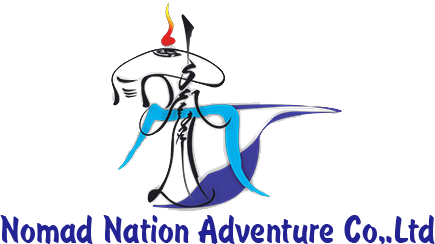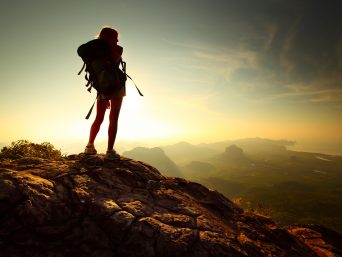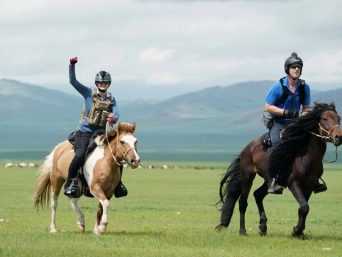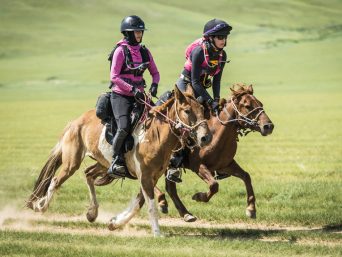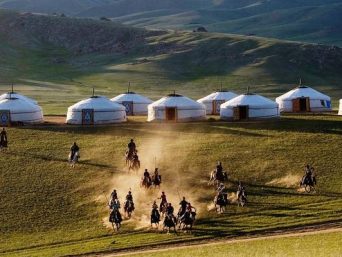Quite possible to modify this program according to your wishes!!!
Day – 1 : Ulan Bator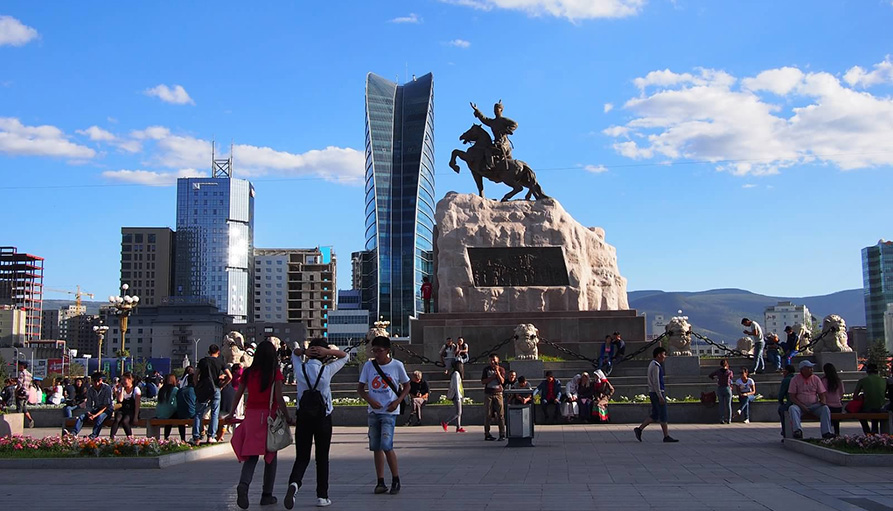
Arrival at Ulan Bator and transfer to your hotel for a warm shower and a moment to relax after this long flight.
Afternoon, visit of Gandantegchinlin Monastery. Built in 1809, the Gandantegchinlin Monastery – formerly known as the Gandan Monastery – is a Tibetan-style Buddhist monastery located in Ulan Bator. Its name of Tibetan origin can be translated as “Great site full of Joy”.Several hundred monks currently reside there.
It contains a statue of Megjid-Janraiseg (Bodhisattva Avalokiteshvara – called Chenrezig in Tibetan) by 25 meters high.
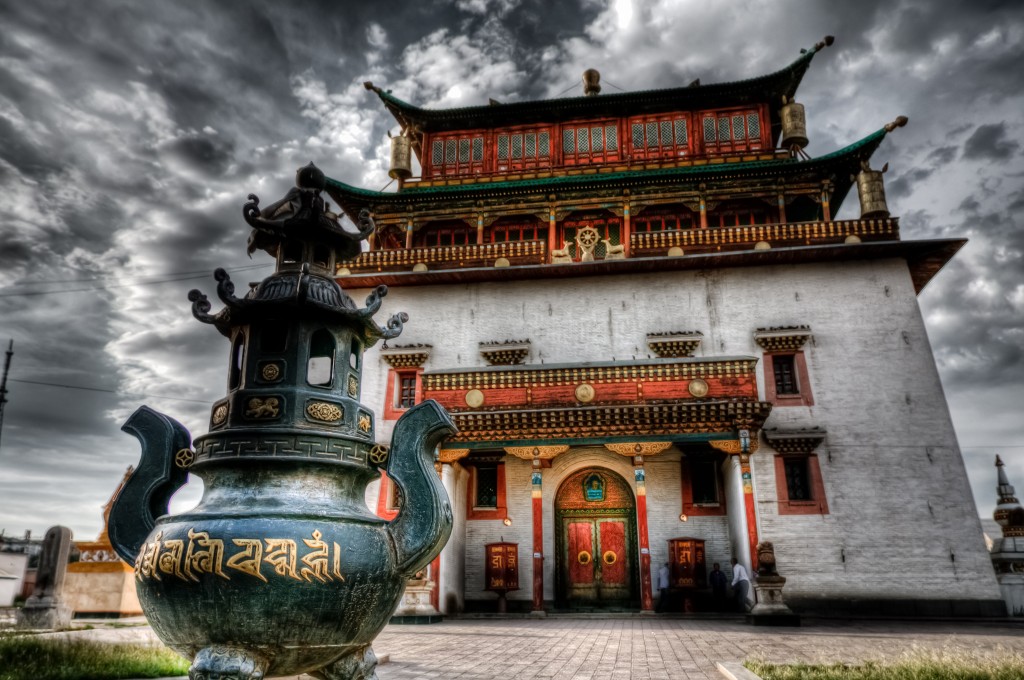 The original statue, made of copper, was erected in 1911 and was dismantled in 1937 by Soviet troops (the remains of the statue were subsequently used to make bullets during the siege of Leningrad). Following the fall of communist regimes, it was rebuilt in 1996 with donations of gold from Nepal and Japan.
The original statue, made of copper, was erected in 1911 and was dismantled in 1937 by Soviet troops (the remains of the statue were subsequently used to make bullets during the siege of Leningrad). Following the fall of communist regimes, it was rebuilt in 1996 with donations of gold from Nepal and Japan.
Adorned with gold and nearly 2,286 precious stones, the statue weighs over 20 tons and is covered with nearly 100 kg of silk clothing.
Visit of the National Museum of Mongolian History. The National Museum of Mongolian History tells the story of the country, from prehistoric times to today. In this museum there is also an ethnographic section with costumes and jewels from various ethnic groups of countries: Kazakhstan, Buriats, Clzemchins…
Dinner and overnight at the hotel.
Day – 2: Ulan Bator – Horseback Riding in the Orkhon Valley (Karakorum)
 After breakfast, let’s start our trip by Karakorum. Karakorum was the capital of the great emperor Chinggis Khan 13th century.
After breakfast, let’s start our trip by Karakorum. Karakorum was the capital of the great emperor Chinggis Khan 13th century.
The change of environment is striking: after the city, we are now in a mountainous area, a maze of green valleys with wooded slopes.
Lunch at the roadside.
We meet nomad breeders and horses who will be our companions for the next 9 days.
We settle in a tourist camp near Kharkhorin canton.
Dinner and night at the camp of yurts (2 to 4 people per yurt, with single beds, showers in a separate building).
Day – 3: Kharkhorin to Khujirt
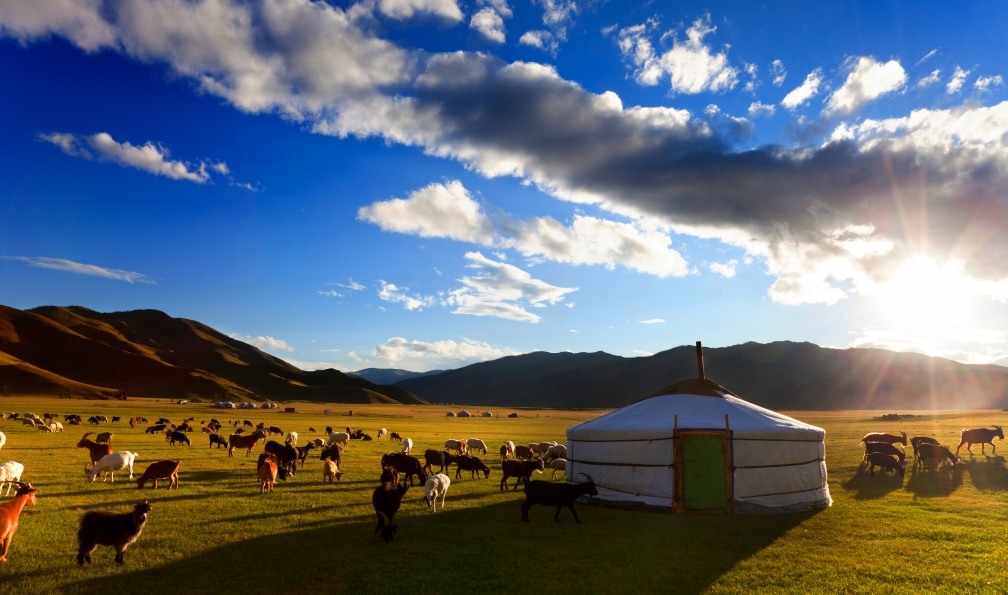 After breakfast; we start our first day on horseback in the mountains bordering the north of the Orkhon Valley.
After breakfast; we start our first day on horseback in the mountains bordering the north of the Orkhon Valley.
Classified in 2004 as a UNESCO World Heritage Site as the cradle of nomadic Mongolia, the “Orkhon Valley Cultural Landscape“, covering an area of approximately 122,000 hectares, covers a vast area of grazing land stretching km long and 30 km wide on both banks of the Orkhon River.
.Grasslands are still used today by nomadic pastoralists in Mongolia, and many families continue the traditional way of life. In the valleys and around the rivers are nestled yurts which shelter nomadic families. In the wild, herds of horses, yaks, sheep and goats move in these protected areas.
 The Orkhon Falls are in fact the falls of the Ulaan Tsutgalan River. The river falls into a spectacular canyon formed after a volcanic eruption more than 20,000 years ago, forming a cascade 26 meters high and 6 meters wide.
The Orkhon Falls are in fact the falls of the Ulaan Tsutgalan River. The river falls into a spectacular canyon formed after a volcanic eruption more than 20,000 years ago, forming a cascade 26 meters high and 6 meters wide.
The site is enchanted by the contrast between the whiteness of the moss and the black rock that forms the walls of the canyon. Down the walls to the foot of autumn, you will discover trees and flowers that take advantage of the abundance of water to grow.
Everything is carried by our vehicles, nothing to wear on horses, so we can enjoy many gallops!
After riding, we arrive at a quiet and sublime ecological tourism camp for dinner and at night. In this camp we can wash the head and have it massage too.
Dinner and night at the camp of yurts (2 to 4 people per yurt, with single beds).
Day – 4 Khujirt to Uurtiin Tohoi
After breakfast; we ride side Orkhon river to reach Uurtiin Tokhoi. It is a historic place and with a sublime landscape.
Uurtiin Tokhoi Canyon: The gully was originally named Khuurtiin Tokhoi, which translates to “Gully of Dead Bodies”. The name comes from a history of many foreign invaders retreating and being killed by Mongolian warriors in the gully in ancient times. The name was changed to Uurtiin Tokhoi over the course of history.
Everything is carried by our vehicles, nothing to wear on horses, so we can enjoy many gallops!
We settle in a tourist camp near Uyrin Tokhoi canyon.
Dinner and night at the camp of yurts (2 to 4 people per yurt, with single beds, showers in a separate building).
Day – 5 Uurtiin Tokhoi to Ulaan Tsutgalan Falls
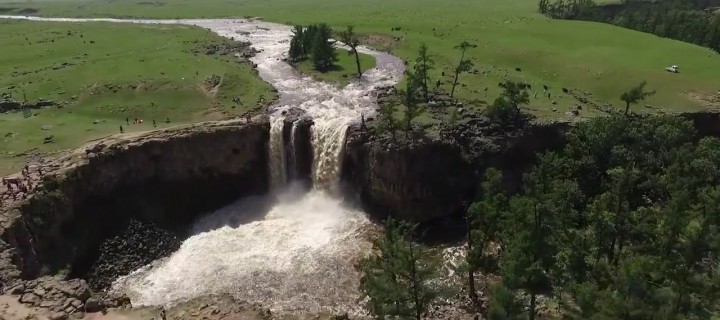 After breakfast, we descend the mountains to the banks of the Orkhon. The views are amazing on the big valley with wooden mountains in the background.
After breakfast, we descend the mountains to the banks of the Orkhon. The views are amazing on the big valley with wooden mountains in the background.
Everything is carried by our vehicles, nothing to wear on horses, so we can enjoy many gallops!
We visit the waterfalls of Ulaan Tsutgalan and installation in a tourist camp near the falls.
Dinner and night at the camp of yurts (2 to 4 people per yurt, with single beds, showers in a separate building).
Day – 6 Ulaan Tsutgalan falls to Buurug
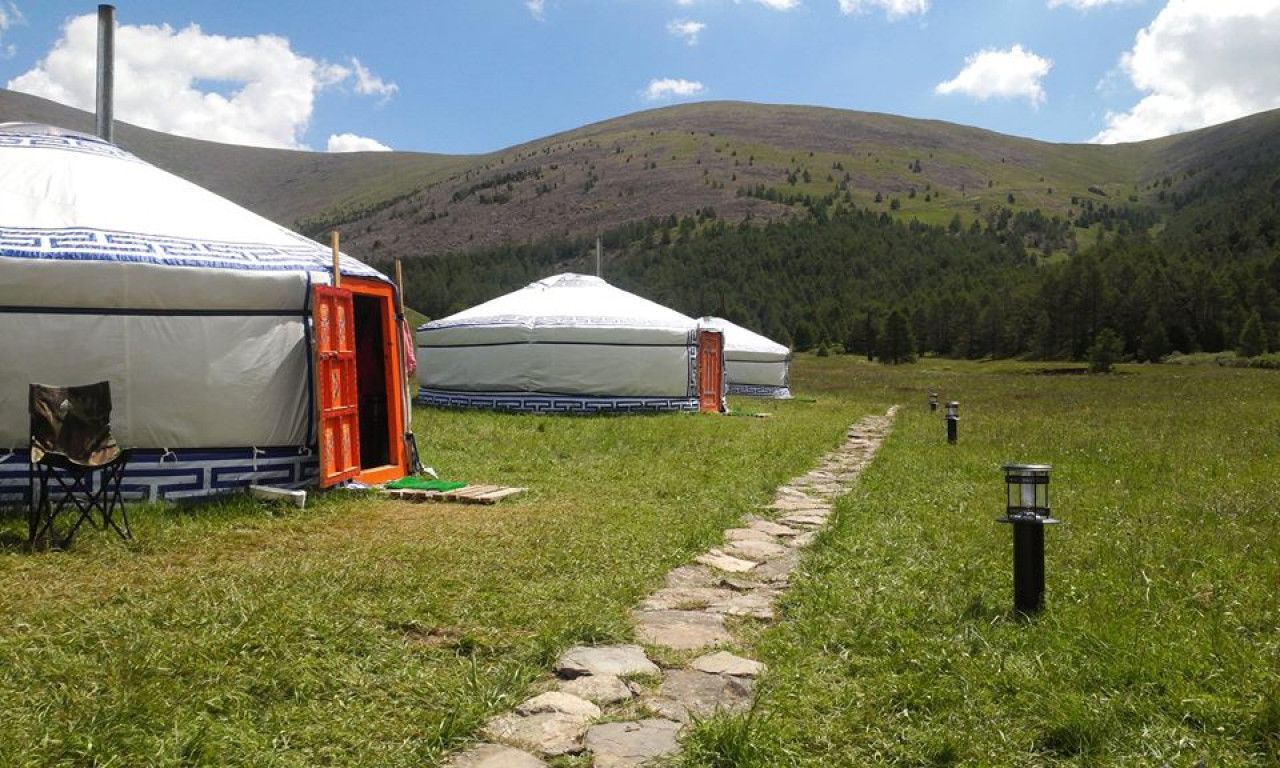 After breakfast, we continue our riding in the upstream part of the valley where the landscape becomes more and more wild.
After breakfast, we continue our riding in the upstream part of the valley where the landscape becomes more and more wild.
This volcanic region has ancient black lava flows that contrast with the white running water of the Orkhon River.
On horseback, we reach the forest with the impressive mountains.
Everything is carried by our vehicles, nothing to wear on horses, so we can enjoy many gallops!
We settle in a tourist camp in a forest at the end of the Orkhon Valley.
Dinner and night at the camp of yurts (2 to 4 people per yurt, with single beds, showers in a separate building).
Day – 7 Buurug – Tsenkher Hot Spring
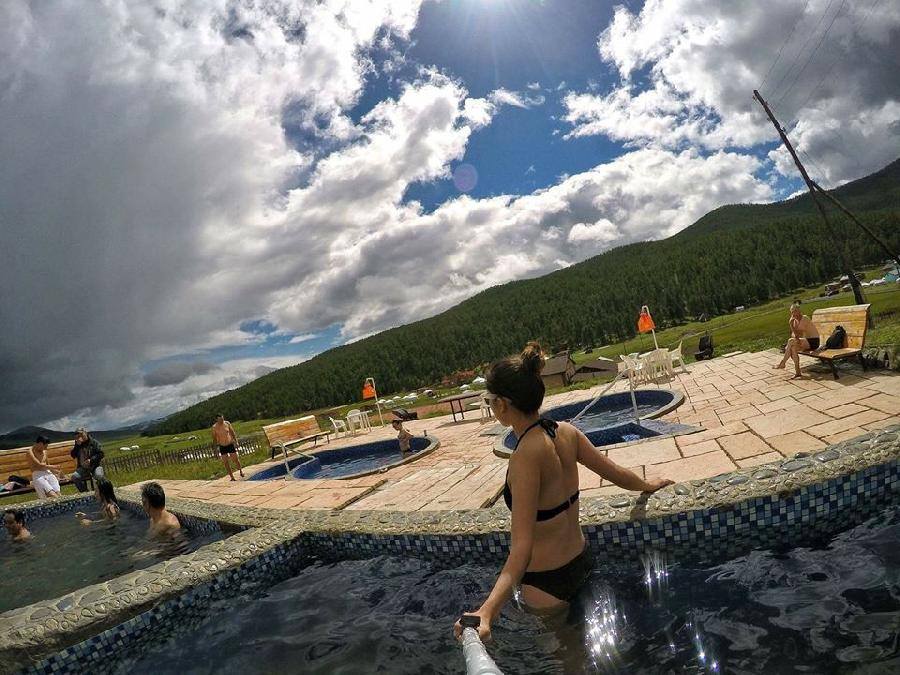 After breakfast, we will go north to Arkhangai province. Coming to the canton of Tsenkher where there will be a hot spring that will take away our good fatigue from our beautiful horseback ride!
After breakfast, we will go north to Arkhangai province. Coming to the canton of Tsenkher where there will be a hot spring that will take away our good fatigue from our beautiful horseback ride!
In the afternoon, we arrive at Shiveet Mankhan Tourist Camp. This place is one of the most famous and beautiful in the country.
The Tsenkher hot spring is located on the territory of Tsenkher canton and has an altitude of 1860metres.
Tsenkher Hot Spring: The three central provinces (Arkhangai, Uvurkhangai, Bulgan) are famous for its many old volcanoes. These volcanoes explain the presence of natural hot springs that flow year-round at 1860 meters (1.16 miles) above sea level and its water is not mixed with the groundwater because it is hot. The spring is also maintained at high pressure under the soil flow rate is high, 10 liters per second.Tsenkher hot springs have healing properties, especially on joint diseases and diseases of the nervous system. Composition: sodium carbonate, hydrocarbonate, sulphate, fluorite, hydrogen sulphide. In a pleasant green wooded area, yurt camps with equipment and lower temperature baths have been set up for travelers. Several tourist camps offer tourists indoor and outdoor baths. They transfer hot water through tubes and build swimming pools. The healing water and the amazing nature of the wooden mountains make it an excellent place to relax. The night bath is great. Sitting in the pool to drink while seeing stars in the dark sky is one of the favorite activities here.
Day – 8 Tsenkher Hot Spring to Mini Gobi (nomadic family)
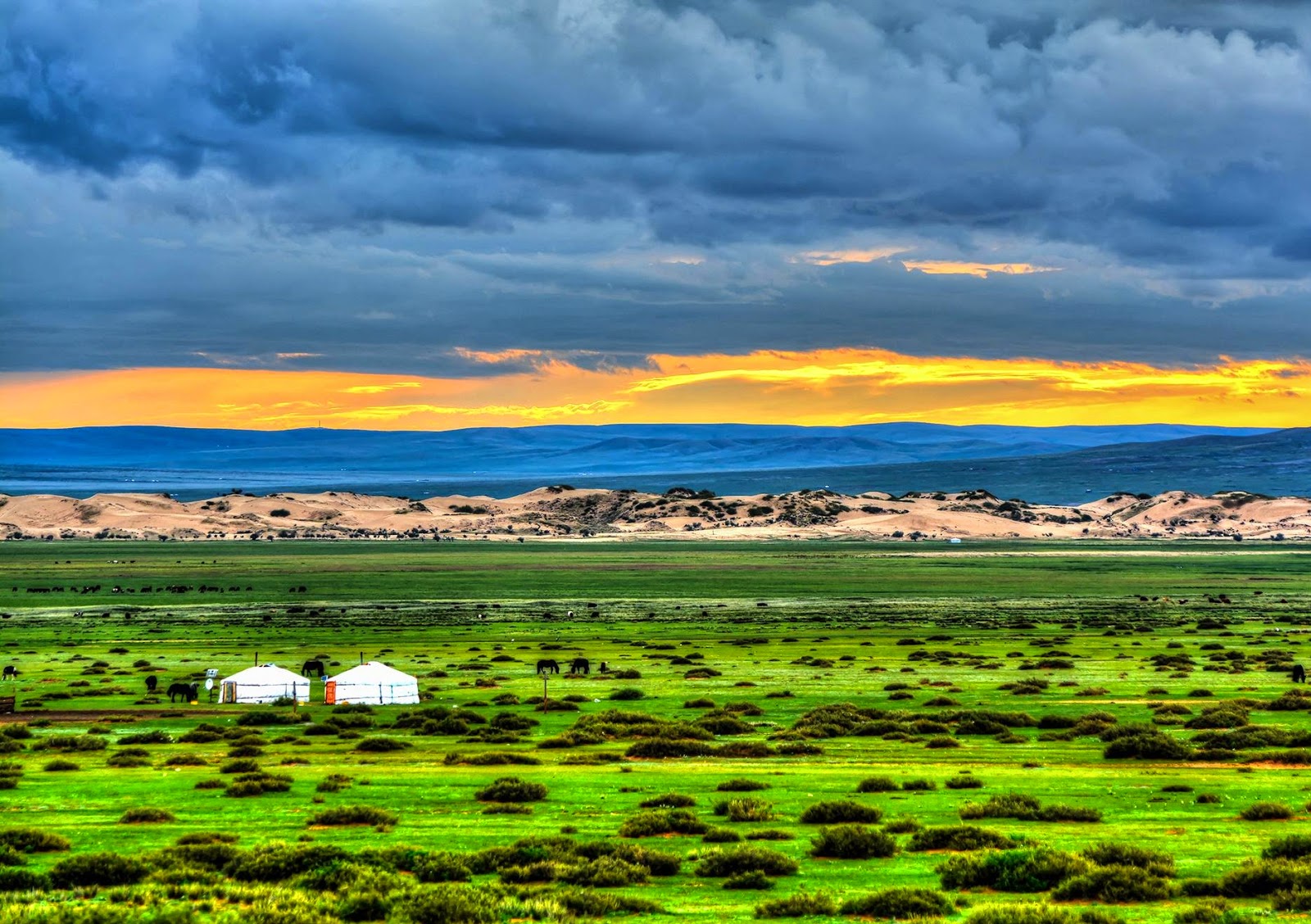 After the breakfast; let’s go for the discovery of the nomadic way of life!
After the breakfast; let’s go for the discovery of the nomadic way of life!
The day is devoted to the discovery of the traditional way of life of the nomads of Mongolia. To end our trip, this is an essential must-have that will make you live in a world other than your experiences!
Each camp of yurts is home to a family whose daily life is punctuated by the care of herds: dairy mares, sheep, goats, caring for sick or weak animals, moving animals to new pastures …
The women also take care of the children, they cook, prepare various dairy products (butter, cheese, fermented mare’s milk, drinking milk …) and maintain the interior of the yurt.
The men take care of the animals, the maintenance of the equipment and the harnessed horses.
We can participate in these activities and get to know the different members of the family.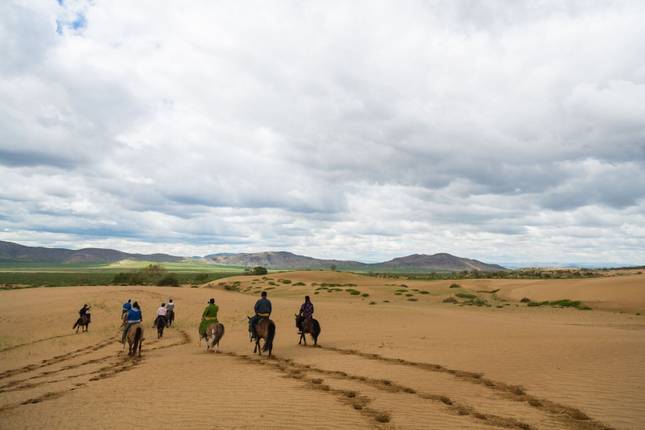
To this day, riding a camel is another experience than the horse. We are sure you would like this camel ride (1 to 2 hours) in the sand dunes of Elsen Tasarkhai.
Elsen Tasarkhai: Elsen Tasarkhai is a sand dune that stretches to 80 km long, 5 km wide across Burd soum of Uvurkhangai province and Gurvanbulag soum of Bulgan province. Dividing the southern part of the sand dune with the so-called Mongolian sand, the northern part of the sand dune is called Khugnu Tarna. Due to the soddenness resulted from Tarna River flowing in the western part of the sand dune; it is covered with rare plants such as willow, elm, and dogwood etc. There is a rocky mountain called “Khugnu khan” in the north and the Ikh Mongol Mountain lies in the south that defines the central point of Mongolia. The widest part of the sand dune is located on the skirt of Ikh Mongol Mountain and at the bight of Sharlin and Jargalant River covering 9-10 km square area.
In the evening, our hosts will prepare a traditional specialty, the Khorkhog, the “Mongol Barbecue“.
Khorkhog is a traditional nomadic specialty of the Mongolian steppe. You will almost never find it in a restaurant.
To prepare the Khorkhog, the nomads cut the sheep or goat into pieces, keeping the bones. Fifteen stones the size of a fist are heated in the fire.
When they are hot enough, they are layered with the meat in a metal container, which is often a can of milk.
Other ingredients are added on stones and meat, potatoes, carrots, cabbage, seasoning …
Sufficient water is added so that all the ingredients are cooked by both the steam and the heat of the stones. The container is closed and placed on the fire for an hour to an hour and a half.
When the container is opened, the Khorkhog is ready to eat.
The family removes the meat and vegetables, as well as the stones that have become black, both because of the fire and the fat they have absorbed.
These stones are still hot and the guests keep them in their hands because the Mongols consider them to be beneficial for health.
We usually eat the Khorkhog with the fingers, using a knife to cut the meat.
This night, we will sleep in a “yurt of hosts” close to the yurts of our nomadic family.
The comfort is simpler and you will discover the real nomadic way of life …
Day – 9 Mini Gobi (nomadic family) to Khustai National Park
 At the end of this beautiful trip, we go to Khustai National Park. For riders is an honor to see the wild horses of Prjewalski from near.
At the end of this beautiful trip, we go to Khustai National Park. For riders is an honor to see the wild horses of Prjewalski from near.
Khustai Mountains: Pursuant to Mongolia has stated internationally to conserve up to 30 percent of its territory specifically in supporting its biodiversity conservation, today there are 102 state protected areas established with 28 million ha area equal to 14.86% of total territory. One of them is Khustai National Park. Implementing the Przewalski’s horse reintroduction program was the fundamental reason for establishing Khustai National Park. Initially established for the first reintroduction of the Przewalski’s Horse the park covers more than 50,000 hectares. After the scientific programs being run out of the reserve since 1992 achieved measureable success and provided valuable conservation outputs Khustai was upgraded to a National Park in 1998
The Przewalski: Equus ferus Przewalski Groves, 1986 (PH) is considered to be the last and only remaining wild horse species in the world.  However, it was extinct in the wild by 1969 and was reintroduced back into the wild in Mongolia, China and Kazakhstan in the 1990s. The species could survive in captivity after 53 foals from the Mongolian Gobi region were successfully shipped to European countries. However, only 12 of them produced foals. Reintroduction started only in 1992 by the import of 16 Przewalski´s horses from the Netherlands to Khustain nuruu in Mongolia in association with the Foundation for the Preservation and Protection of the Przewalski Horse and the Mongolian Association for Conservation of Nature and Environment. During 1992-2000 at five times 84 wild horses from European countries were reintroduced in Khustai National Park. At present 335 individuals of Przewalski’s horses exist in Khustai with 34 breeding harems and more than 80 bachelors compete for the mares. It is the highest number of Przewalski’s horse in the World.
However, it was extinct in the wild by 1969 and was reintroduced back into the wild in Mongolia, China and Kazakhstan in the 1990s. The species could survive in captivity after 53 foals from the Mongolian Gobi region were successfully shipped to European countries. However, only 12 of them produced foals. Reintroduction started only in 1992 by the import of 16 Przewalski´s horses from the Netherlands to Khustain nuruu in Mongolia in association with the Foundation for the Preservation and Protection of the Przewalski Horse and the Mongolian Association for Conservation of Nature and Environment. During 1992-2000 at five times 84 wild horses from European countries were reintroduced in Khustai National Park. At present 335 individuals of Przewalski’s horses exist in Khustai with 34 breeding harems and more than 80 bachelors compete for the mares. It is the highest number of Przewalski’s horse in the World.
Lunch at the roadside
Dinner and night at the camp of yurts (2 to 4 people per yurt, with single beds, showers in a separate building).
Day – 10 Khustai National Park to Ulan Bator
 Breakfast and drive to Ulan Bator.
Breakfast and drive to Ulan Bator.
Lunch on roadside.
Afternoon is dedicated to shopping in stores downtown, or at the Narantuul “black market” where you will find traditional clothing and objects of daily life.
Visit a cashmere factory.
In the late afternoon, you will attend a show with traditional dances, music and songs from Mongolia, especially the amazing Khoomei.
The Khoomei is an overtone singing (throat singing) in which the singer produces two distinctively audible pitches at the same time, including a low pedal note, or drone, derived from the fundamental frequency of the vocal cord vibrations, and higher melodic notes that result when the singer’s mouth acts as a filter, selecting one note at a time from among the drone’s natural overtone series pitches.
The sound is reminiscent of the Jew’s harp.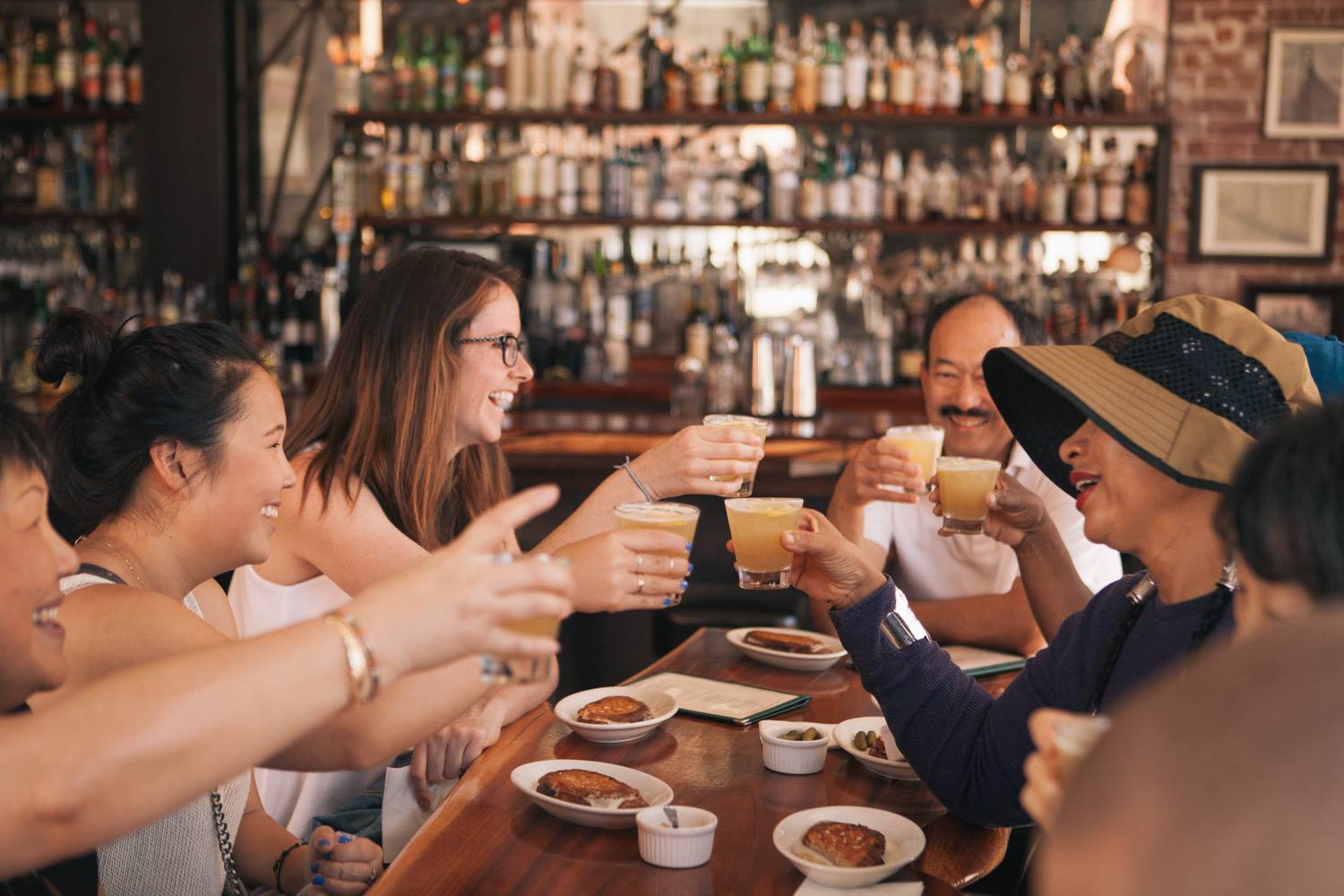
This type of song is recorded in Intangible Cultural Heritage of Humanity by UNESCO in 2010.
Dinner downtown and overnight at a 3* hotel (local standard) in the center of Ulan Bator.
Day – 11: Return Home
Breakfast (depending on your flight schedule) and transfer to airport for your flight back home.
